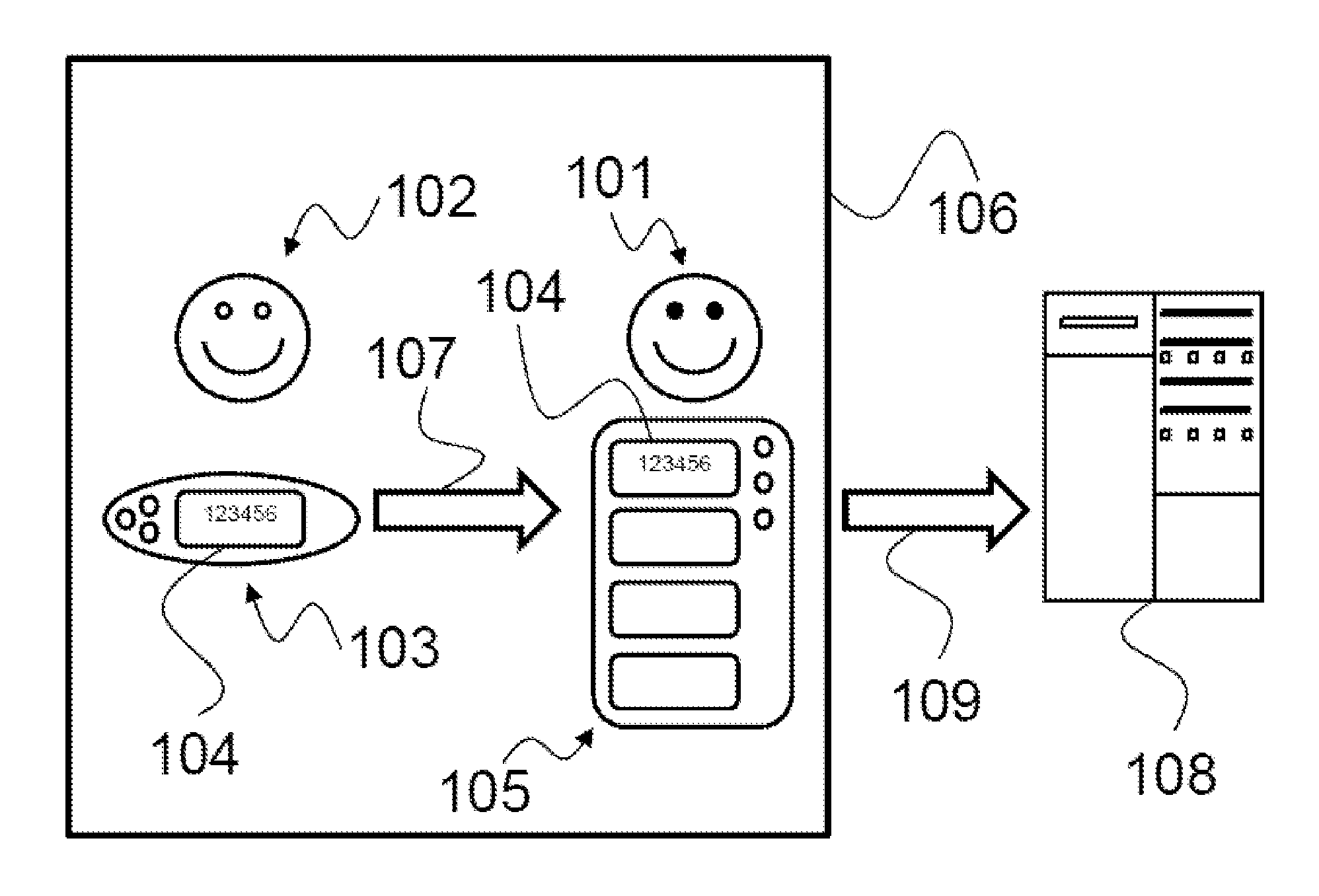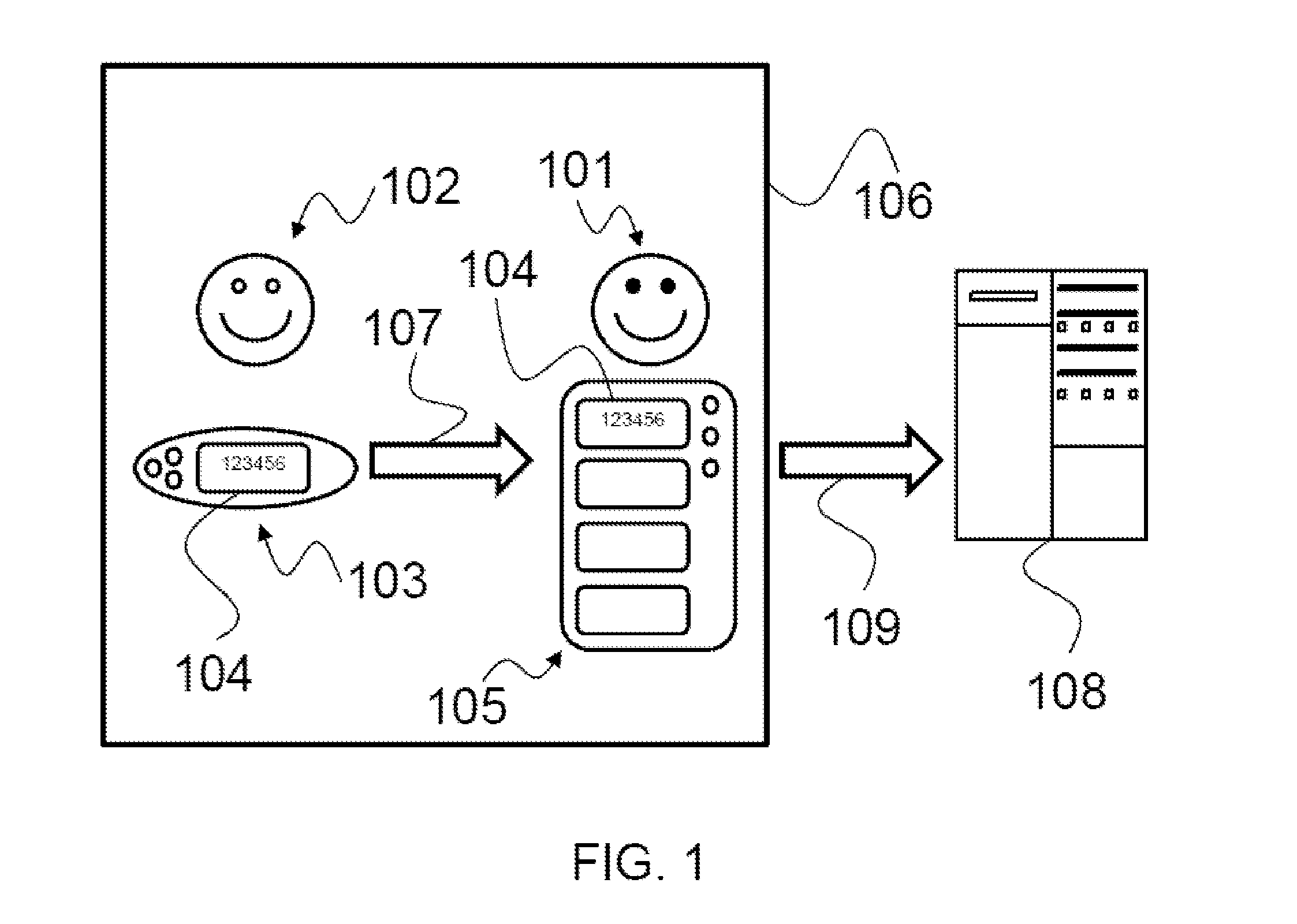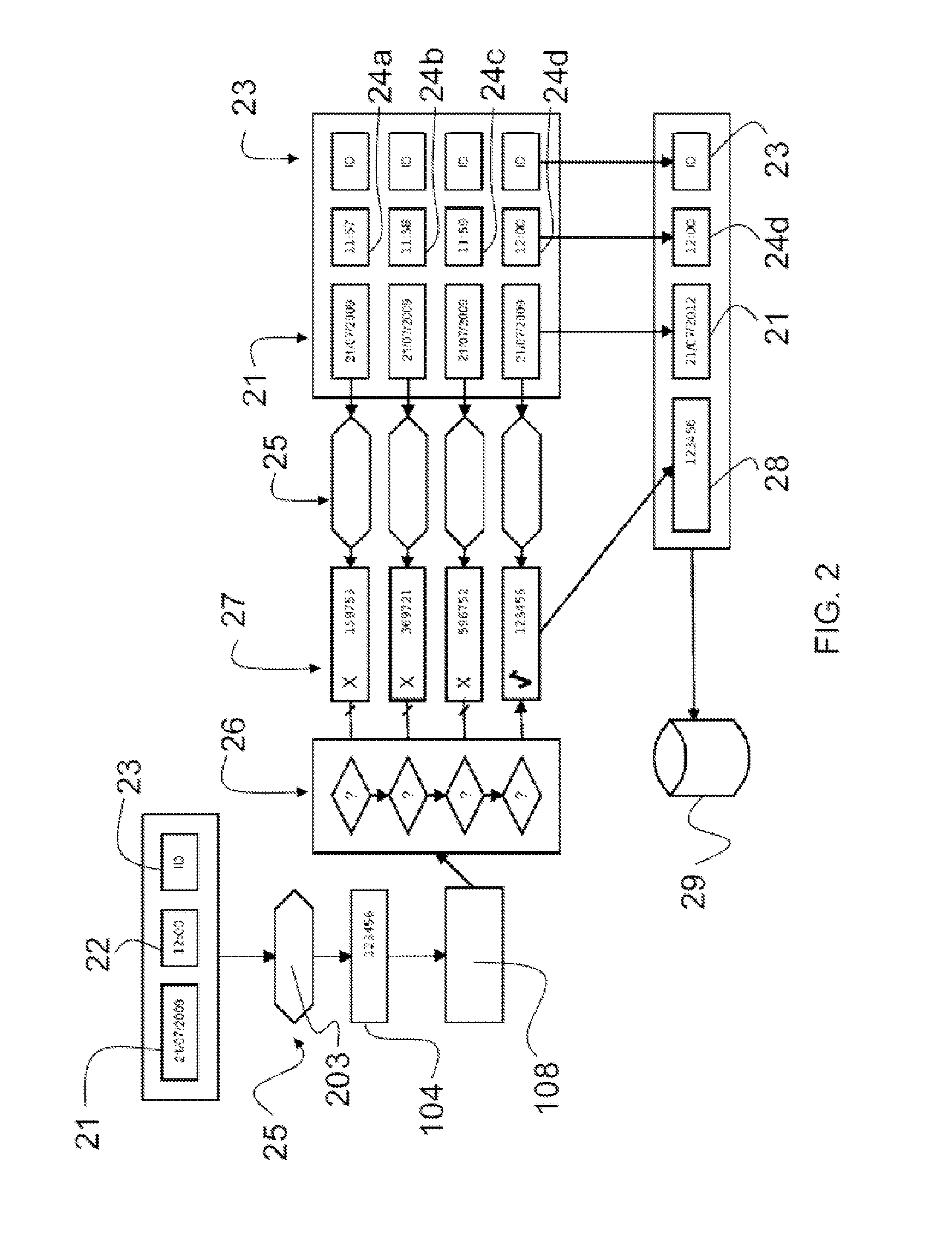Method and system for certifying the presence of an operator
a technology of operator and method, applied in the field of method and system for certifying the presence of an operator, can solve the problems of not allowing the presence to be certified with an adequate level of security, requires real-time transmission of entered data, and dedicated connection, etc., to achieve the effect of enhancing security, simplifying transmission and storage thereof, and less demanding
- Summary
- Abstract
- Description
- Claims
- Application Information
AI Technical Summary
Benefits of technology
Problems solved by technology
Method used
Image
Examples
first embodiment
[0071]FIG. 3 illustrates the method, wherein the operator is required to provide information about the user identifier, the date, the time, and a stored presence code.
[0072]At step 201 the presence certification method starts; at step 202, a presence code is requested to attest the presence of the operator 101 at the user 102 at that given time instant.
[0073]At step 203, the device 103 operable by the user 102 generates a TOTP presence code 104 to be transmitted to the operator.
[0074]At step 204, the device 105 operable by the operator 101 receives the code 104 and stores it into a permanent or volatile memory. The device 105 is in the proximity of the device 103. Storing may occur automatically or manually, in which case the operator 101 will write or enter the presence code.
[0075]In general, a digital medium will be used for storage purposes, but an analog one may be used as well. It is also conceivable that storage occurs on a non-digital medium, such as, for example, a pre-print...
second embodiment
[0083]FIG. 4 illustrates the method, wherein the operator is required to signal a user identifier, the date, and a stored presence code. The validation device 108 automatically provides time recognition; this embodiment is particularly advantageous when the certification system is used as a “stamper”, so that the operator does not have to worry about the date / time.
[0084]At step 201 the presence certification method starts; at step 202, a presence code is requested; at step 203, the device 103 operable by the user 102 generates a presence code 104, which is then stored at step 204 by the device 105 operable by the operator; at step 205, the operator specifies the identifier of the device 103.
[0085]At step 306, the operator specifies the service date only, and this information is stored into the device 105.
[0086]At step 307, the device 105 sends to the validation device 108 the stored data, i.e.: presence code, date, user identifier.
[0087]At step 308, the remote validation device 108 ...
third embodiment
[0090]FIG. 5 illustrates the method, wherein the operator is only required to provide the user identifier and to store a presence code. The validation device 108 automatically recognizes the date of generation, which may be encoded, for example, in the presence code 104; this embodiment is also particularly advantageous when the certification system is used as a “stamper”, so that the operator does not have to worry about the date / time.
[0091]Furthermore, this embodiment is particularly advantageous because it ensures a higher level of system automation by requiring minimal human intervention.
[0092]At step 201 the presence certification method starts; at step 202, a presence code is requested; at step 203, the device 103 operable by the user 102 generates a presence code 104, which is then stored at step 204 by the device 105 operable by the operator.
[0093]At step 407, the device 105 sends to the validation device 108 the presence code stored together with the user identifier.
[0094]A...
PUM
 Login to View More
Login to View More Abstract
Description
Claims
Application Information
 Login to View More
Login to View More - R&D
- Intellectual Property
- Life Sciences
- Materials
- Tech Scout
- Unparalleled Data Quality
- Higher Quality Content
- 60% Fewer Hallucinations
Browse by: Latest US Patents, China's latest patents, Technical Efficacy Thesaurus, Application Domain, Technology Topic, Popular Technical Reports.
© 2025 PatSnap. All rights reserved.Legal|Privacy policy|Modern Slavery Act Transparency Statement|Sitemap|About US| Contact US: help@patsnap.com



